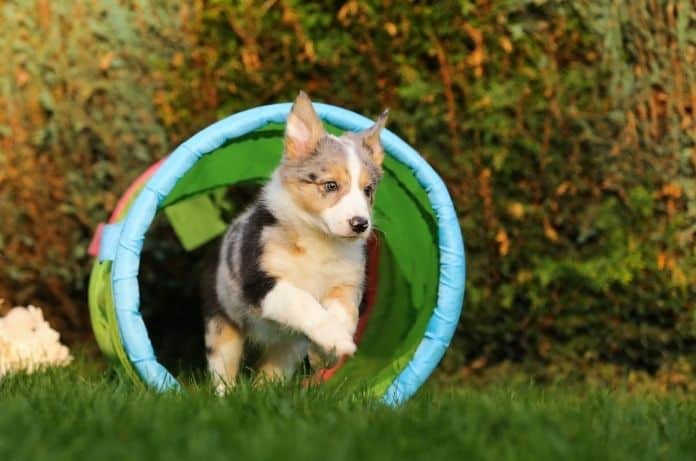Just welcomed a new puppy into your household? Congrats! One of the first things you’ll need to do with your new pet is train them. Training is the key to keeping your puppy safe and ensuring they don’t get up to mischief. Training your dog might sound hard, but you’d be surprised by how quickly puppies can absorb new information! To help you train your new best friend, here’s a beginner’s guide to training a new puppy.
Obedience Training
A good place to start is with teaching your dog the basic commands. This includes commands like sit, stay, heel, and come. It also includes potty training your pup. Once your dog understands the basics, it’ll be much easier to teach them more advanced commands.
Leash Training
You’ll also need to leash train your puppy so that they feel comfortable going on walks. A puppy who isn’t at ease on a leash will be a nervous wreck after outdoor excursions. Getting your dog accustomed to their leash will help keep them safe and make exercising an enjoyable experience for both you and them.
Agility Training
Speaking of exercising—if you’re athletic, you may want to take your dog to an agility training course. Agility training will improve their stamina so they can run faster and for longer periods. It will also help them grow accustomed to following commands.
Socialization Training
Exposing your puppy to different people and animals is crucial to their socialization. Introducing them to people and animals outside of the ones in your household will teach them to be less anxious and aggressive around unfamiliar things. This makes taking them to new places (like the vet’s office) or introducing them to new people (like a new friend or roommate) much less stressful for all parties involved.
Types of Training Methods
Some popular training methods you can use when training your puppy include positive reinforcement, clicker training, mirror training, and the use of vibrational collars.
Positive Reinforcement
This involves providing your pup with rewards when they get a command right or perform any good behavior.
Clicker Training
When your dog executes a command or performs a good behavior, press on a clicker and then give them a treat. It’s classic Pavlovian conditioning—your dog will eventually associate the sound of the clicker with the reward, which they know they need to perform a certain action to receive.
Mirror Training
This one’s interesting. With mirror training, you need to showcase the action you want your dog to perform and then reward them for mimicking you. So if you want to teach your dog to sit, you need to sit first and encourage them to do the same.
Just make sure to pair your actions with a verbal command, or else you’ll need to sit, heel, and roll every time you want your dog to do one of those things!
Vibrational Collars
These are commonly used for dogs with vision or hearing impairments. Instead of associating a certain action with a command, your dog will learn to associate actions with certain vibrational patterns.
Training doesn’t have to be daunting, so don’t be afraid to give it a go! With the tips from this beginner’s guide to training a new puppy on hand, teaching your new pup basic commands will go smoothly.






